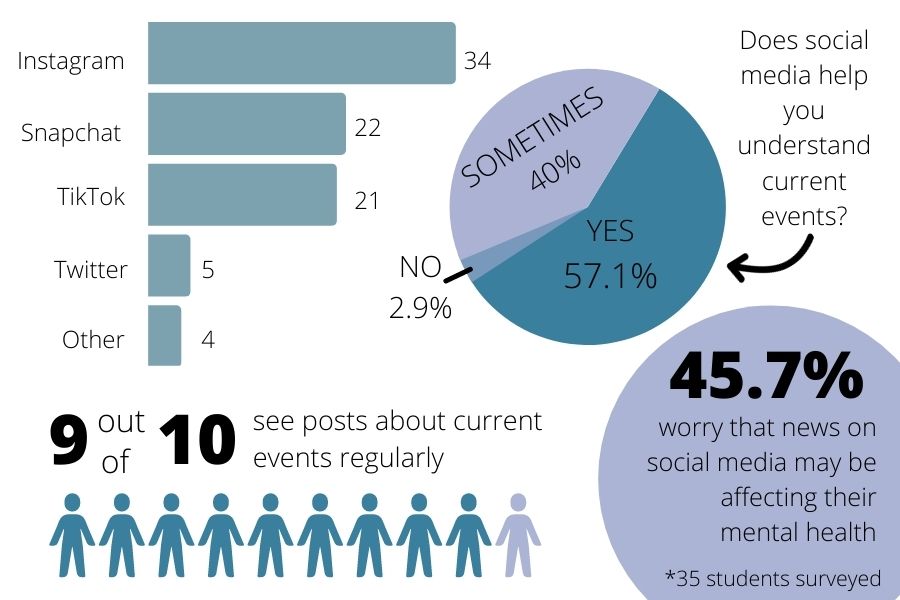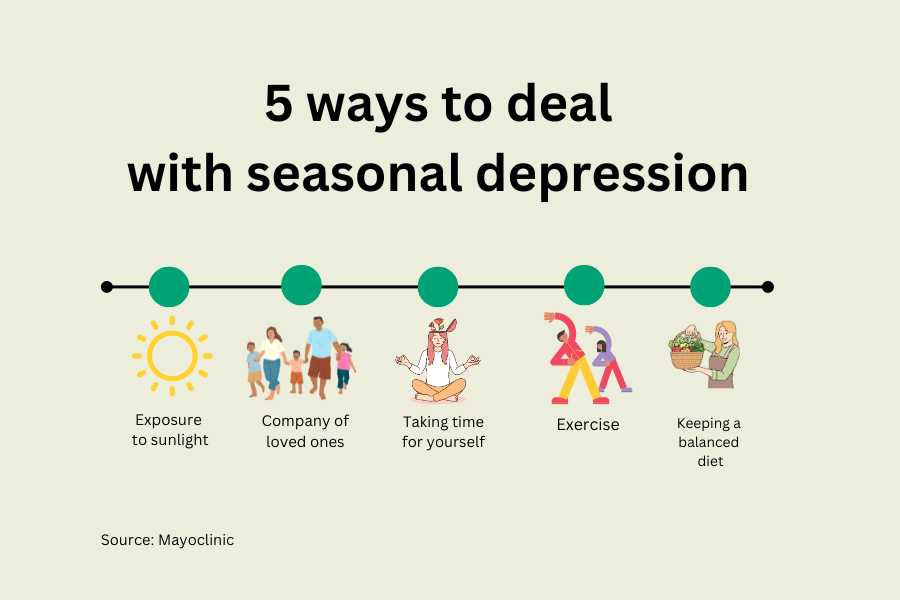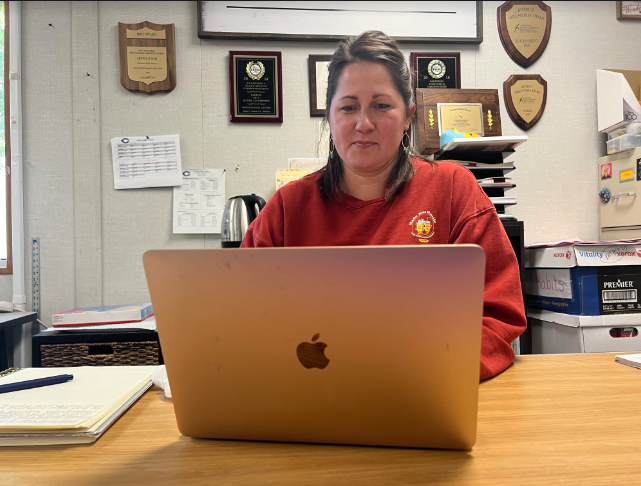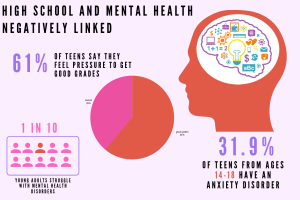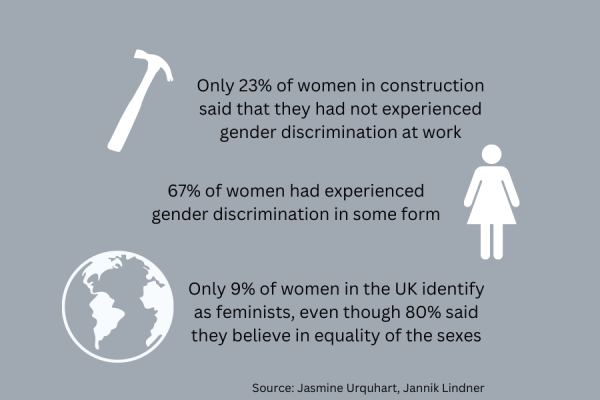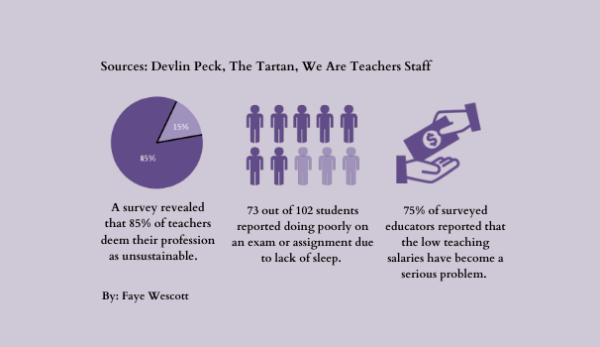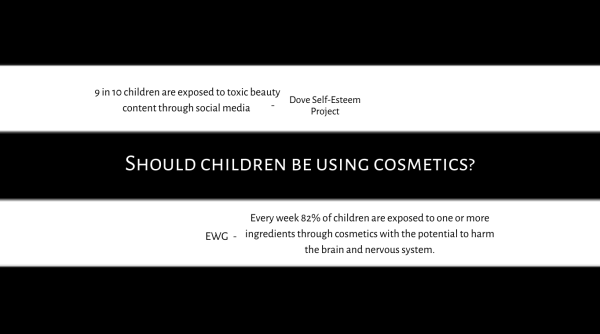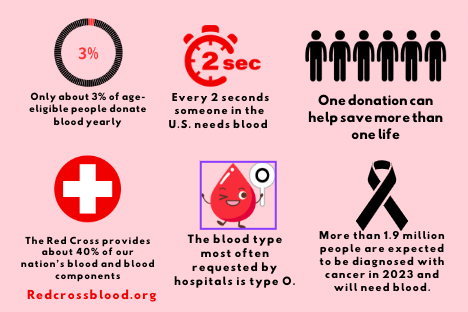Social media’s influence on the news
The vast majority of students surveyed said that their social media feeds regularly have posts about current events, and most agree that they feel the posts are helpful.
June 4, 2021
The spread of information about current events has ramped up in the past year due to the plethora of civil rights issues around the world. Social media is one of the main places that these topics are covered.
Many accounts I see on social media, specifically Instagram and TikTok, post about current events on a regular basis. Some are official accounts of established news websites and channels, like The New York Times or ABC News. But many are designed to deliver information solely on social media.
There are pros and cons to delivering news this way. On one hand, infographics and minute-long videos are easier to digest than lengthy news articles and channels on TV. This makes it more engaging for viewers, especially teens, that may not be as interested in these topics to begin with. On the other hand, many issues that are covered on these platforms are too complex to be covered in that brief manner. The current cycle of information on social media can oversimplify pertinent news.
Most people who post, like, comment and share information about current events have good intentions. Often, their work to inform the public is successful. But one issue that I have noticed about this style of news and activism is that issues about racism, sexism and other topics are turned into trends.
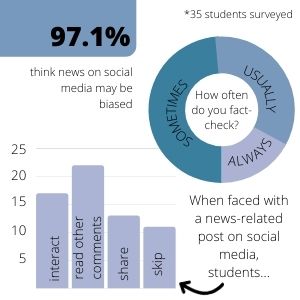
Once a topic is thrown into the washing machine that is the social media algorithm, it is often watered down and altered to be more accessible and appealing to the masses. In half a month, the general public is satisfied and moves on to the next trend. For one week, there is a buzz about fighting against animal testing. The next week, the topic may be advocating for inmates on death row, sex trafficking or the humanitarian crisis in Yemen. While all of these topics are important and deserve attention, the way the information is delivered can alter their message.
I conducted a survey of CHS students asking them questions about their observations of news on social media.
Students saw a plethora of current event topics like the Black Lives Matter movement, the Palestine-Israel conflict and the uptick in anti-abortion legislature. Although most students surveyed said that news-related information on social media helps them understand current events better, 45.7% worry that the constant flow of news topics may be affecting their mental health. Granted, this statistic may not be completely reflective of the entire student body of CHS, as only thirty-five students were surveyed. But, it should still be troubling.
Students said that news on social media can be “kinda depressing”, “overwhelming” and “heartbreaking”. Others say that posts about upsetting or violent topics cause stress and even anxiety attacks because of their potentially triggering content.
“Constant news of depressing events is hard to bear,” said senior Jaden Cipolla. “It is difficult to stay hopeful for the future.”
Another concern of being informed about the news through social media is having the responsibility to fact-check. 51.4% of students said they check for misinformation on social media posts always or most of the time. But this still leaves many teens in the dark when it comes to the truth about current events.
“Even though I consider myself highly media literate, I am still susceptible to misinformation,” said junior Claire Corrigan. “This sense of panic from misrepresented (or even outright false) news stories can negatively impact my mental health.”
Corrigan went on to say that even reliable news sources can induce a similar feeling of panic and despair because of the serious issues that are covered. Social media is a powerful tool that can amplify voices of marginalized groups and educate the general public about a myriad of issues. But the way that it is delivered, especially to teens, can have a damaging effect. It can be overwhelming and it’s easy to fall into the trap of misinformation. In order to keep people informed about current events, we must rethink the way we deliver news on social media.



